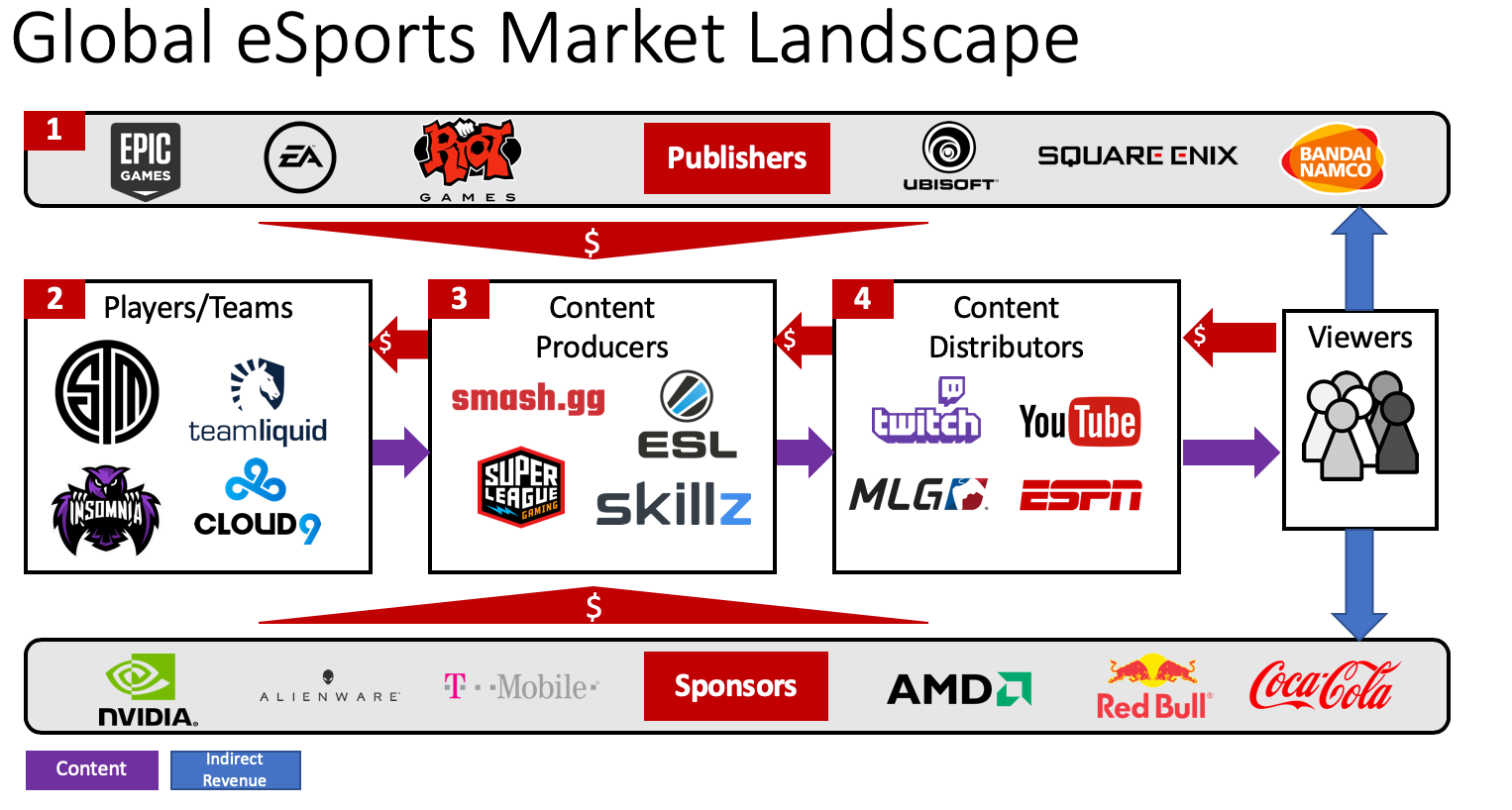ESports Landscape

After putting some hours over this weekend to compete in the Fortnite World Cup semifinals and then tuning into the livestream (from YouTube) of the Sunday finals on the background, I started to wonder about the future of eSports, particularly audience engagement.
From my last post covering eSports, I reported that the number of fans of eSports is expected to hit 600 million in 2020 and revenues are to reach over $1 billion in 2019. Although the gaming market was expected to grow to nearly $140 billion in 2018––according to Newzoo––eSports is expected to grow at the fastest clip going forward. With those figures in mind, I wanted to map the eSports landscape to paint a clearer picture of the drivers of the market:

- Publishers own the intellectual property of the games and, thus, are considered extremely influential and powerful in the eSports landscape. Publishers decide where their games are played and whether it can be broadcasted or streamed.
- Players and teams participate and compete in the games. Both professional and casual players also can stream on content distributors, providing them the opportunity to monetize their content. Because some players possess an enormous following (e.g., Ninja has over 14 million Twitch followers as of this article), they are crucial to audience engagement and the reputation of the game. Players and teams receive revenue in the form of prize money, sponsorships, and direct donations from viewers.
- Content producers include league and tournament organizers. They provide competitive events that garner attention from eSport fans. Revenue sources include tickets and merchandise, sponsorships, game publisher fees, and media rights.
- Content distributors include streaming providers and broadcasters that distribute content to viewers. The major revenue source is advertising.
Fundamentally, a game is successful when people are playing it. Streamers of the game provide viewers the chance to see the game in action before purchasing or downloading. If the game seems fun, he or she will purchase or download the game. As such, professional and casual players who stream play an influential role to the eSports ecosystem. I believe startups that cater to the monetization betting of the content produced by streamers can be impactful. Some ways that this can be done is through audience engagement via betting, providing analytics and gamifying the interaction between a streamer and the viewer. An example would be Camelot, a startup which allows fans to request certain content from creators and reward creators for accomplishments of "bounties".
I am excited to see what’s ahead for eSports and I hope this short post proves to be a useful reference for your intelligent conversations within the market.